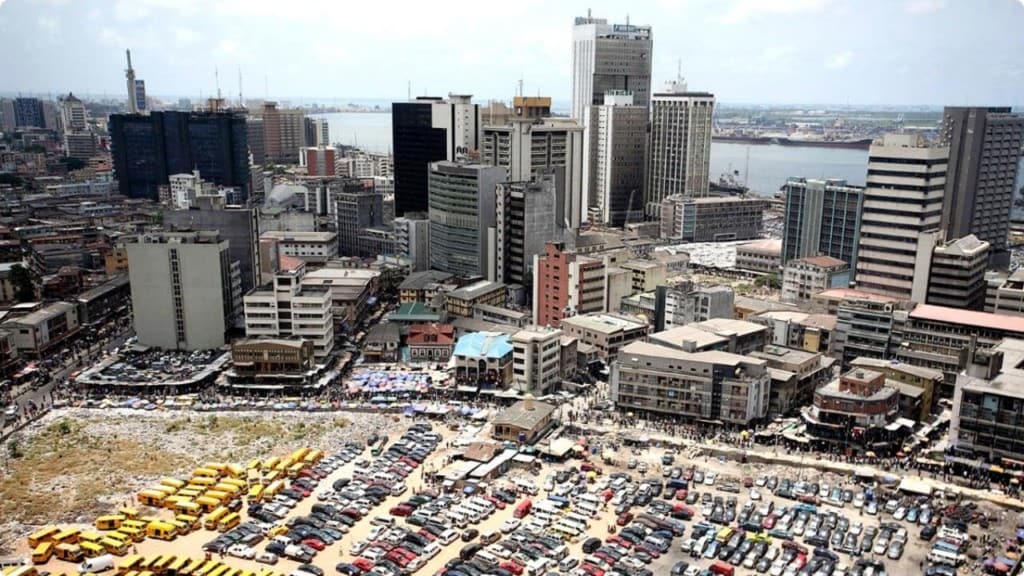Despite the N3.98trn increase in nominal Gross Domestic Product during the fourth quarter of 2020, about 33 sectors out of the entire 46 sectors that made up the Nigerian economy recorded negative growth rate.
Analysis by THE WHISTLER of the Gross Domestic Product Report released by the National Bureau of Statistics revealed that only 13 sectors of the economy were able to post positive growth in GDP.
Advertisement
This, according to experts implied that the Nigerian economy which posted a growth rate of 0.11 per cent and unexpectedly exited recession in the fourth quarter of last year is still fragile.
The Nigerian economy grew 0.11 per cent in the fourth quarter of 2020, from the 6.11 per cent contraction recorded in the third quarter of last year, representing a slow recovery from recession.
Though weak, the NBS stated that the positive growth reflects the gradual return of economic activities following the easing of restricted movements and limited local and international commercial activities in the preceding quarters.
The Report stated, “Nigeria’s Gross Domestic Product grew by 0.11 per cent (year-on-year) in real terms in the fourth quarter of 2020, representing the first positive quarterly growth in the last three quarters.
Advertisement
“Though weak, the positive growth reflects the gradual return of economic activities following the easing of restricted movements and limited local and international commercial activities in the preceding quarters.
“As a result, while the Q4 2020 growth rate was lower than growth rate recorded the previous year by –2.44 per cent points, it was higher by 3.74 per cent points compared to Q3 2020.”
On a quarter on quarter basis, the NBS report stated that real GDP growth was 9.68 per cent indicating a second positive consecutive quarter on quarter real growth rate in 2020 after two negative quarters.
Overall, in 2020, the annual growth of real GDP was estimated at –1.92 per cent, a decline of –4.20 per cent points when compared to the 2.27 per cent recorded in 2019.
The soft landing for the economy in the last quarter follows gradual recovery in global crude oil prices and the intervention by the Central Bank of Nigeria that injected over N2trn into the economy to speed up recovery.
Advertisement
Also, the country’s banking sector increased lending to the different sectors of the economy with N25.02trn issued by December, 6 2020 in a bid to cushion the effect of the pandemic.
Nigeria had entered its worst recession since 1987 as the GDP in real terms declined by -3.62 per cent(year-on-year) in the third quarter of 2020.
This was after a 6.10 per cent contraction recorded in the second quarter, 2020.
Crude oil prices fell and the lock-down set back induced by the Covid-19 pandemic had last year hit the continent’s biggest economy.
Analysis of the GDP report by this website showed that 33 sectors were still in the negative growth trajectory.
Some of the sectors that posted negative growth are fishing (-3.6%); oil (–19.76%); non-oil sector (1.69%); mining and quarrying (–18.44%); manufacturing(–1.51%); electricity, gas ,steam and air conditioning Supply (–2.51%); transportation and storage ( –5.95%); arts, entertainment and recreation (–1.52%)
Advertisement
The Finance and Insurance also contracted by (–3.63%) administrative and support service sector (–5.31%); professional, scientific and technical services (–5.43%); education (-11.43%); Human Health and Social Services (-3.05%)
Further analysis of the report revealed that 11 sectors posted positive growth. They are public administration (1.80%); Human Health and Social Services (3.05%); agricultural (3.42%); construction sector (1.21%); trade (3.20%); accommodation and food services (15.03%); Information & Communication grew (14.95%); Real Estate (2.81%); public administration (1.80%) and human health and social services (3.05%).



